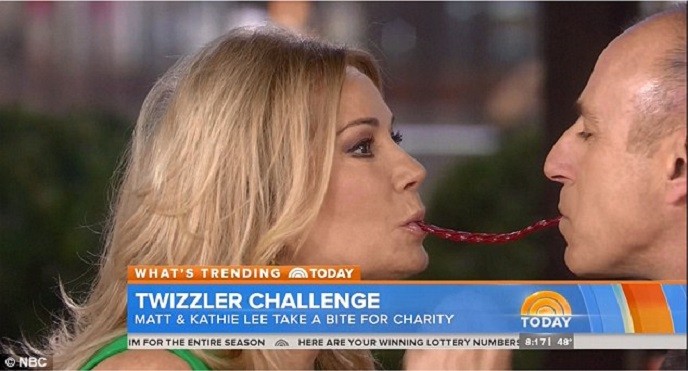Encouraging people to donate to charity is usually a good thing. There are all sorts of great causes out there for you to support. One of the biggest problems that so many charities and non-profit organizations face is getting noticed by the public. It’s hard to break through all that noise and to convince people to take action.
That sounds a lot like Internet marketing, don’t you think? You’ve got all these other marketers and companies vying for the attention (and dollars) of all of these other people on the web. Sometimes, it takes a little spectacle to get on the map and it’s even better when your story suddenly goes viral. To reach that level, you can try one of two paths: you can innovate and come up with a completely novel idea or you can imitate and mimic an idea that has already proven to work.

And that’s where we find ourselves today with a bit of a closer look at the the #TwizzlerChallenge. Many people are saying that it could be for 2015 what the ALS Ice Bucket Challenge was for 2014. It’s exactly the same concept, except it’s also completely different. Let me explain.
When the ALS Ice Bucket Challenge first kicked off, participants who were “tagged” were given the option to donate to ALS research or to dump a bucket of ice water over their heads. Somehow, that choice eventually evolved from an “or” to an “and” instead. And it went viral with all sorts of celebrities getting in on the action. All said, over $100 million was raised the ALS Association.
People bought into the viral nature of the spectacle, even if they didn’t actually learn anything new about amyotrophic lateral sclerosis. In principle, the Twizzler Challenge works in the same way. You donate, you participate (it involves eating a Twizzler with someone, recreating the famous scene from Lady and the Tramp), and then you tag more people to keep the chain going.

But what’s different? For starters, it’s branded. I don’t know if the organizers got together with Hershey’s (the makers of Twizzlers candy) to collaborate on this, but the branding is pretty front and center. By contrast, the Ice Bucket Challenge wasn’t really connected to any one (for-profit) corporation.
Second, the Ice Bucket Challenge quickly became known as the ALS Ice Bucket Challenge. The “branding” was for the charity, not for some candy. When you read this article on CNN about the Twizzler Challenge, there’s no mention of the charity until almost the very end. For the record, it’s New York Collaborates for Autism that’s behind this newest challenge.
Is this considered “innovation” at all? I don’t think so. The “imitation” part of it is prety obvious and it remains to be seen just how successful this rehashed version will be for a different charity. I imagine there will also be some difficulty with the hashtag, as it’s supposed to the #TwizzlerChallenge and not the #TwizzlersChallenge. I don’t know about you, but I’ve always said “Twizzlers” with an “S.” It feels odd without it.
So, circling all the way back around, what does this mean from an Internet marketing perspective? Even if it means you’ll be riding the coattails of someone else to get started, you’ll ultimately want to come up with something better or something truly original if you want to have some lasting appeal. Again, it’s true that you don’t have to be first if you’re going to be better.